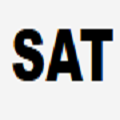Encoding 2-player games in QBF correctly and efficiently is challenging and error-prone. To enable concise specifications and uniform encodings of games played on grid boards, like Tic-Tac-Toe, Connect-4, Domineering, Pursuer-Evader and Breakthrough, we introduce Board-game Domain Definition Language (BDDL), inspired by the success of PDDL in the planning domain. We provide an efficient translation from BDDL into QBF, encoding the existence of a winning strategy of bounded depth. Our lifted encoding treats board positions symbolically and allows concise definitions of conditions, effects and winning configurations, relative to symbolic board positions. The size of the encoding grows linearly in the input model and the considered depth. To show the feasibility of such a generic approach, we use QBF solvers to compute the critical depths of winning strategies for instances of several known games. For several games, our work provides the first QBF encoding. Unlike plan validation in SAT-based planning, validating QBF-based winning strategies is difficult. We show how to validate winning strategies using QBF certificates and interactive game play.
翻译:编码二人游戏的QBF是困难且容易出错的。为了实现棋盘游戏(例如井字游戏、连四、夺旗、猎人与逃亡者以及突破)上游戏的简明规则和统一编码,我们提出了棋盘游戏域定义语言(BDDL),受计划领域PDDL成功的启发。我们提供了从BDDL到QBF的有效转换,将有界深度的获胜策略编码为QBF。我们的提升式编码将棋盘位置符号化,并允许相对于符号化棋盘位置的条件、效果和获胜配置的简明定义。编码的大小在输入模型和考虑的深度中呈线性增长。为了展示这种通用方法的可行性,我们使用QBF求解器计算了多个已知游戏实例的关键深度。对于几个游戏,我们的工作提供了第一个QBF编码。与基于SAT的计划验证不同,验证QBF基本的获胜策略是困难的。我们展示了如何使用QBF证书和互动游戏来验证获胜策略。



